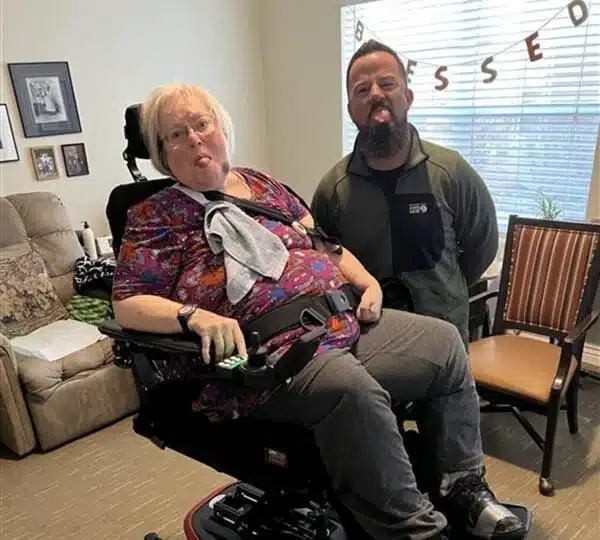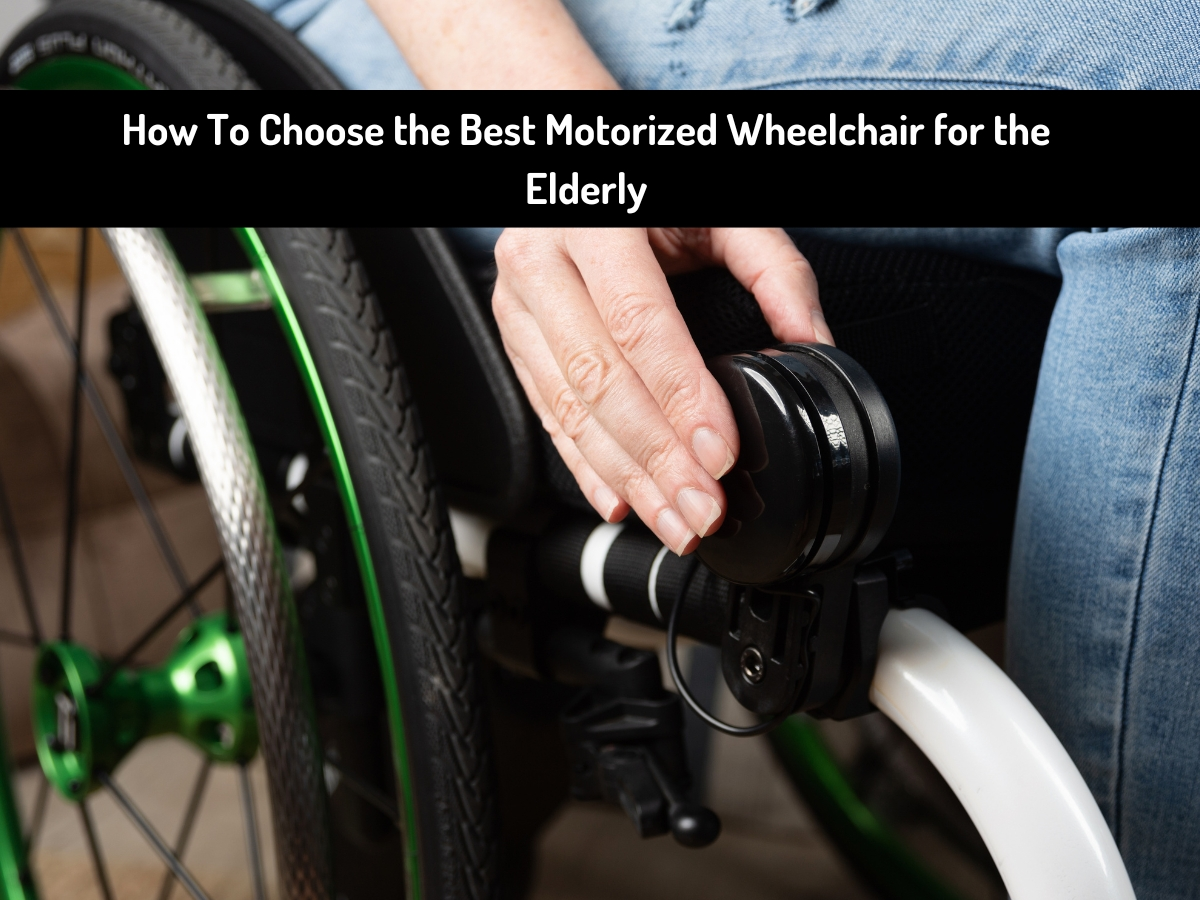If you’re looking for the best motorized wheelchair for an elderly loved one, you’re probably feeling a mix of emotions—maybe a bit overwhelmed, unsure where to start, or even frustrated with too many options. That’s completely normal. Choosing the right wheelchair is a big decision because it directly affects your loved one’s comfort, mobility, and quality of life.
In this guide, I’ll walk you through everything you need to know—step by step—to help you make the best choice. Whether you’re a caregiver, parent, grandparent, or even a senior yourself doing research, this article will help you understand the key features, types, and how to match a wheelchair with your needs.

Why a Motorized Wheelchair Help Seniors
As people get older, walking or moving around without help can become harder—especially for those with arthritis, joint problems, stroke history, or general mobility loss. Manual wheelchairs can be tiring, especially if the user has weak arms or limited upper-body strength.
That’s where motorized chairs for seniors come in. These electric-powered wheelchairs allow seniors to move around safely and independently—indoors and outdoors—with minimal effort. Instead of relying on others, they can control their movement using a joystick or remote. That freedom can be life-changing.
Step 1: Understand the Your’s Needs
Before you even begin browsing models, ask yourself a few key questions:
- How mobile is the person? Can they sit upright for long periods? Do they need support for posture or balance?
- Where will the chair be used? Indoors, outdoors, or both?
- Do they travel often? Will the chair need to fold or fit into a car?
- Is comfort a top priority? For longer use, a comfortable wheelchair for elderly users is essential.
Being honest about the user’s health, home setup, and daily routine will help narrow your options quickly.
Step 2: Look for Key Features That Matter
There are tons of features out there, but not all of them are necessary for every senior. Here are the essentials you should focus on:
1. Comfort and Seating Support
Make sure the seat is padded and wide enough. Seniors often sit for long periods, so poor cushioning can lead to sores or back pain. Look for chairs with adjustable footrests, headrests, and armrests. Some advanced models offer memory foam or gel cushions—great for fragile skin.
Pro Tip: Reclining seats or tilt-in-space features can help relieve pressure and prevent poor circulation in the legs.
- Soft but supportive cushions
- Adjustable back and leg support
- Optional tilt or recline features
- Padded armrests and headrests
2. Control Simplicity
The best motorized wheelchairs for elderly users have easy-to-use controls—usually a joystick that moves in four directions. Make sure the person can operate it comfortably. Some models offer left- or right-hand placement, voice commands, or remote control, which can help if hand movement is limited.
- Joystick controls (on the armrest)
- Touch buttons for speed and direction
- Attendant controls (so a caregiver can help)
3. Battery Life and Range
Not all batteries are the same. A good chair should go at least 10–15 miles on a single charge. If the chair is used mostly indoors, that’s usually plenty. But if the senior goes outside often or uses it for errands, look for models with longer battery life.
- Average range: 10–15 miles per charge
- Charging time: 6–8 hours
- Battery type: Most use deep-cycle lead-acid or lithium
4. Safety Features
This is very important. Look for:
- Seat belts
- Anti-tip wheels
- Emergency brake or shut-off
You don’t want to risk tipping over, especially if the person has poor balance.
5. Size and Maneuverability
Make sure the chair can move through narrow doors and hallways. Check the turning radius—tight spaces require a chair that turns well without getting stuck. Many wheelchairs for seniors are designed for compact indoor use, while others are better suited for outdoor terrain like gravel or grass.
6. Indoor and Outdoor Use
Think about where the chair will be used most. If your loved one enjoys time outside, choose a chair with larger wheels and strong motors.
Look for:
- Smooth driving indoors (tight spaces, small doors)
- Stable riding on outdoor surfaces (grass, sidewalks)
- Durable tires and weather-resistant frames
Some of the best motorized wheelchairs for the elderly work great both inside and outside.
Step 3: Choose the Right Type of Motorized Wheelchair
There are different categories of electric wheelchairs, each designed for a certain lifestyle:
A. Lightweight and Travel-Friendly Models
If your loved one travels often or goes to doctor visits, a portable chair that folds and fits into a car trunk is ideal. These are lightweight but may have shorter battery range and fewer comfort features.
B. Full-Size Everyday Chairs
These are perfect for all-day indoor and outdoor use. They offer better stability, a smoother ride, and more comfort. Most have larger wheels, better suspension, and longer-lasting batteries.
C. Heavy-Duty Models
For seniors who weigh over 250 lbs or need extra support, heavy-duty motorized chairs are built to carry more weight and move on uneven surfaces. These are also great for users who need a wider seat or stronger back support.
Step 4: Match the Chair to the Home and Lifestyle
It’s not just about features—it’s also about fit. Ask yourself:
- Will this chair fit through all doorways at home?
- Can it turn easily in tight spaces like kitchens or bathrooms?
- Does it need to be stored or transported regularly?
- Is there a ramp or elevator if the home has steps?
You might even want to measure the hallway width or entryways to avoid surprises later.
Step 5: Test Before Buying, If Possible
Nothing beats a real-life test. Many medical supply stores allow you to try a chair before buying. Let the senior sit in it, move around, turn, stop, and see how it feels. Pay attention to comfort, ease of use, and how smooth the ride is.
Final Thoughts
Choosing the best motorized wheelchair for elderly family members is more than just buying a product—it’s giving them back freedom and independence. It can help reduce the risk of falls, lessen caregiver stress, and improve emotional well-being.
Take your time, focus on comfort and safety, and make sure the chair matches their daily needs. Whether you’re buying for yourself or someone you care for, the right comfortable wheelchair for elderly users can make a world of difference.
FAQs:
Q1: What is the most important feature in a motorized wheelchair for seniors?
A: Comfort and ease of control are key. A good motorized wheelchair for seniors should have a padded seat, adjustable support, and simple joystick controls.
Q2: Can an elderly person use a motorized wheelchair outdoors?
A: Yes, many motorized chairs for seniors are designed for both indoor and outdoor use. Look for models with sturdy tires, good battery life, and safety features.

